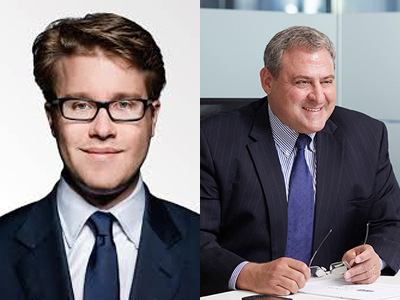Why catastrophe and other insurance bonds make sense
It’s not about the catastrophes themselves, which are bad in all respects, including for the insurance companies. It’s about how certain specialist fund managers enable their client super funds to trade in the risks and provide an enhanced bond-like yield.
The specialist fund managers buy underlying investments which have nothing to do – uncorrelated – with debt or equity markets. They are only linked to risk-related perils. Coronavirus is front of mind right now, but for most of these managers weather-related catastrophes, particularly in the US, are the norm. Some of them have weather specialists on staff.
One of the leaders in this field, Twelve Capital, has increased its representative presence in Australia and New Zealand through the appointment of Allen Partners as its agent last August. There are a handful specialist managers in the world. There are also a dozen or so Australian and NZ funds which have made allocations to insurance-related investment strategies over the past decade or so. From the public record, they include the big sovereign funds Future Fund and NZ Super, as well as super funds such as HESTA, Sunsuper, Hostplus, NGS and multi-managers AMP Capital, VFMC and MLC. MLC has been invested in the asset class for more than 10 years. Globally, there is about US$40 billion invested in the category of liquid catastrophe bonds (‘cat bonds’).
Tom Pascarella, the Allen Partners executive overseeing Twelve Capital, says that in the insurance investing space it’s a wide spectrum of risks and returns. “All the press is on the pandemic at the moment, but Twelve Capital hasn’t invested any money in that category. With pandemics, there are numerous parametric conditions, set by the World Bank as issuer, for payouts to attach to the senior and junior tranches respectively, and the manager felt that after substantial qualitative and quant analysis, the risk-return of the instrument wasn’t there. Bullet dodged there.
There are about 200 cat bonds in the world at the moment and Twelve Capital invests in about 120. It is a relatively low-cost core manager in the asset class. “We position the cat bond fund as liquid, cost-effective and right down the middle [of the Swiss Re Global Cat Bond Index],” Pascarella says. Using a corporate balance sheet analogy, cat bonds tend to be at the top of the stack for insurance-related investments, in terms of risk remoteness with a corresponding yield. The range of ‘Insurance Linked Securities’ (ILS) such as cat bonds and private ILS may offer a higher yield but at a higher risk depending upon where they sit in the stack.
In a recent article published by insurance investment website Artemis, Twelve Capital’s strategy lead for cat bonds, Florian Steiger, said that yields for cat bonds were currently at “multi-year” wide margins. He also said there was an increasing preference for simplicity and liquidity, as the asset class grew.
“Despite the natural catastrophe challenges of recent years, cat bonds have proven to be a robust asset class that has been able to function throughout difficult times,” he said. The year 2017, for instance, was the costliest on record. “The recent volatility in financial markets has shown us that adding a diversifying asset class, such as cat bonds, to a multi-asset portfolio makes sense for most investors,” Steiger said.
Steiger says, as published on the Artemis website, that, notwithstanding the losses of 2017, a record year for US hurricanes (which tend to have the most costly impact in insurance), specialist managers, such as Twelve Capital, have been able to steer their clients through the troubled waters.
He says: “We see solid demand for cat bonds from existing investors looking to top up as well as new investors entering the market. Given that spreads are now at multi-year wides whilst diversification possibilities within the cat bond market have been steadily improving, this should not come as a major surprise.”
– G.B.










